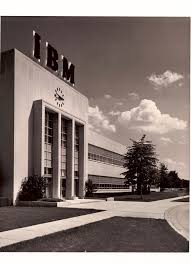People don’t understand us. From the first time I met a technical writer, I’ve heard them — I’ve heard us — say that.
Our bosses don’t understand us. Subject-matter experts don’t understand us. Our audiences don’t understand us.
So, at long last, we have a chance to change that. A few days ago on Twitter, an app designer named Louie Mantia put this out to the world:
https://twitter.com/Mantia/status/1013559718759956481
As Louie’s tweet kept popping up in my timeline — with answers from journalists, lexicographers, and historians — I pondered how a technical writer might answer.
It was harder than I expected.
First take
First I thought of answering Louie’s question like this: Our top priority is writing directly to the people who use the instructions.
Then, in my imaginary dialog, I heard a resounding yawn from the general public: Of course you write for the people who use the instructions. For us. Who else would you write for?
Writing for the audience. While we technical writers trumpet it as a big deal, to our audience it’s so blindingly obvious that it goes without saying.
Second take
So I tried a different approach. Technical writers think in terms of how to use a product, not how the product works.
General public: We know that! It’s common sense, right? I don’t need to know how an internal-combustion engine works. I just want to change the oil.
Third take

Might the people understand us better than we think?
My third try:
We work hard to tailor our information to our audience — in terms of both content and media.
GP: Hmm. The tailoring part, again, should go without saying. Maybe we don’t understand why you have to work so hard.
After all, when we get it right, it looks effortless. And when we get it wrong, it looks like we haven’t tried at all.
I began to realize that the skills we technical writers prize the most and discuss the most among ourselves, like audience analysis and media expertise, are things that — in the minds of our customers — ought to be second nature.
When we say that people don’t understand us, it’s not because they don’t grasp our skill set. It’s because they don’t realize how much energy we devote to honing those skills and to reminding each other how important they are.
Why do we need to remind each other of things that are so fundamental? Is it because our perspective is skewed from spending too much time with our work colleagues (especially Development) and not enough time with our customers?
Maybe it’s not that people understand us. Maybe we don’t understand ourselves.
Epilog
I finally did answer Louie’s question about what seems obvious to us but is misunderstood by the general public.
https://twitter.com/larry_kunz/status/1014256240489390081
What do you think of my answer? How would you have answered?
Do you think our customers would be surprised to learn how much time we spend talking about things that, to them, ought to be second nature?

 What does that look like in real life? Well, the first priority is pretty much what you’d expect. If I’m listening to the team, I know where they need training and guidance. And I try to be responsive when someone has a problem. (I also rely on a couple of colleagues who can also step in and troubleshoot when needed.)
What does that look like in real life? Well, the first priority is pretty much what you’d expect. If I’m listening to the team, I know where they need training and guidance. And I try to be responsive when someone has a problem. (I also rely on a couple of colleagues who can also step in and troubleshoot when needed.)

